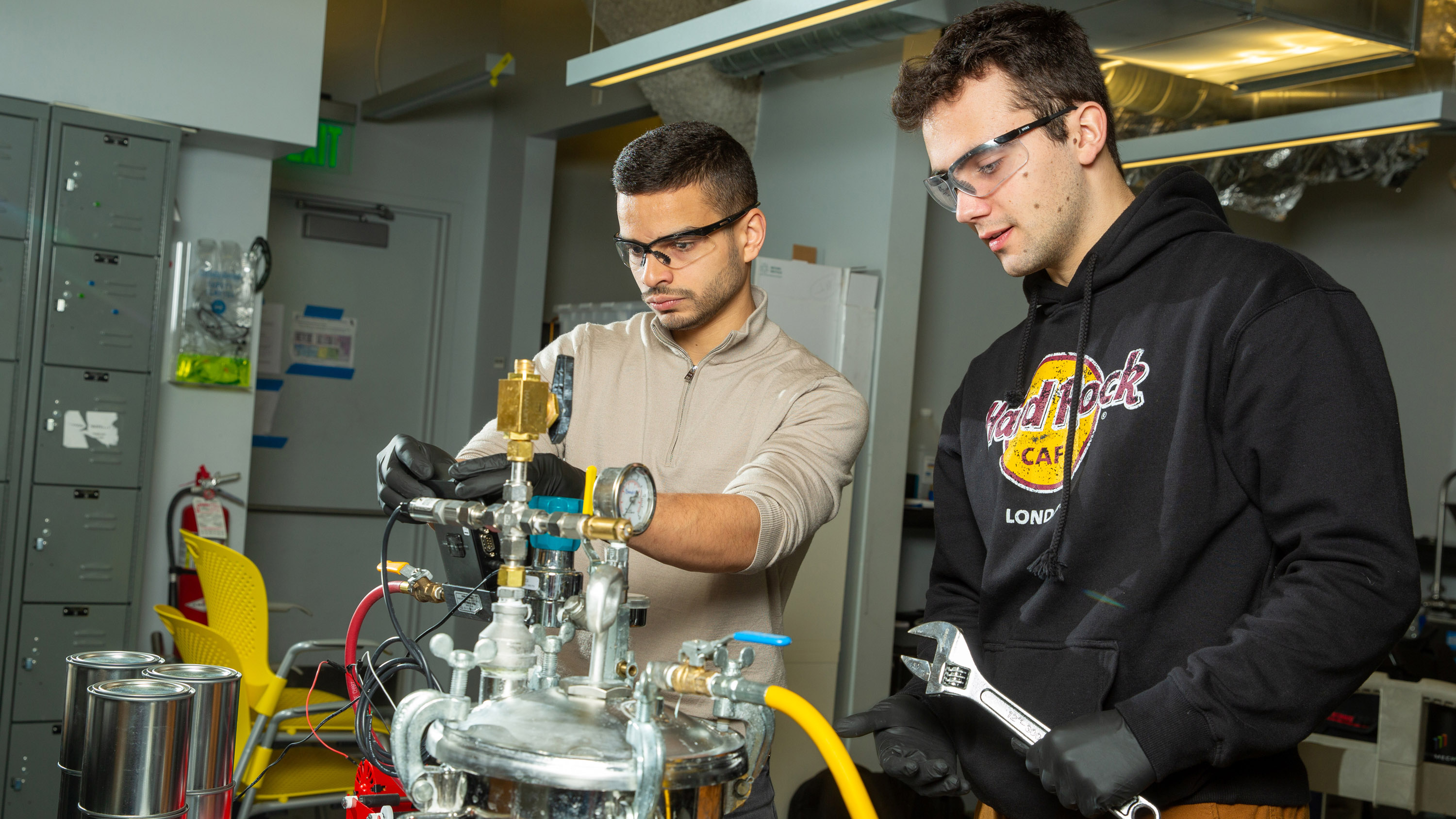Cans + seawater + coffee = fuel
A fast, sustainable method for producing hydrogen gas.

Hydrogen could power engines and fuel cells without generating climate-warming emissions, but carrying the volatile gas around is risky. Old soda cans and seawater could provide an answer.
Aluminum reacts with water to produce hydrogen, but not if it is exposed to air, which creates an oxide barrier on its surface. Douglas Hart, SM ’85, an MIT professor of mechanical engineering, and colleagues had previously shown they could keep the oxide at bay by pretreating the aluminum with gallium indium, but that’s fairly expensive. Now, they’ve shown that running the reaction in a solution of ions helps the alloy precipitate into a form that can be scooped out and reused to generate more hydrogen.
“Lucky for us, seawater is an ionic solution that is very cheap and available,” says Aly Kombargi, a PhD student and lead author of the team’s paper. “I literally went to Revere Beach with a friend and we grabbed our bottles and filled them, and then I just filtered out algae and sand.”
Unfortunately, the reaction happened much more slowly than it had in fresh water. But on a lark, Jonathan Slocum ’14, SM ’15, ScD ’18, tossed in some coffee grounds and was surprised to find that this sped things up. Kombargi ultimately determined that adding a component of caffeine made it possible to generate in five minutes the hydrogen otherwise produced in two hours.
The researchers are developing a small reactor that could run on a marine vessel or underwater vehicle to produce hydrogen on demand.
Keep Reading
Most Popular
People are using Google study software to make AI podcasts—and they’re weird and amazing
NotebookLM is a surprise hit. Here are some of the ways people are using it.
This AI-generated version of Minecraft may represent the future of real-time video generation
The game was created from clips and keyboard inputs alone, as a demo for real-time interactive video generation.
Why AI could eat quantum computing’s lunch
Rapid advances in applying artificial intelligence to simulations in physics and chemistry have some people questioning whether we will even need quantum computers at all.
AI can now create a replica of your personality
A two-hour interview is enough to accurately capture your values and preferences, according to new research from Stanford and Google DeepMind.
Stay connected
Get the latest updates from
MIT Technology Review
Discover special offers, top stories, upcoming events, and more.